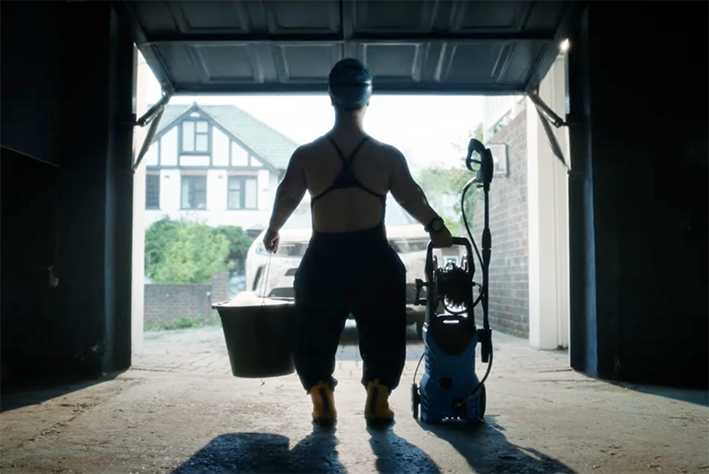Opinion
Investing in accessible advertising helps brands amplify their reach and develop a deeper connection with a large audience.
At the end of 2021, deaf actress Rose Ayling-Ellis won Strictly Come Dancing. It was certainly emotionally uplifting, but it also demonstrated a clear endorsement for disability representation.
Ayling-Ellis’ Strictly win can be seen as a turning point similar to the prime-time coverage of the London 2012 Paralympic Games in cementing the representation and visibility of disability as a hot-button issue for the public.
And it wasn’t just TV audiences that recognised its importance. British Vogue’s May 2023 issue made headlines for promoting disabled talent in fashion, while Barbie and Spider-Man: Across the Spiderverse have driven discussions about their disability representation. In gaming, characters such as Joy in Fortnite, Khalid in Baldur’s Gate and Link from the Zelda franchise showcase how various disabilities and conditions are being translated to virtual worlds.
Last month, Thinkbox published a new introduction to accessible TV advertising to ensure ads can be consumed, understood and appreciated by everyone, including those with hearing or visual impairments. The majority of TV ads currently lack design considerations for accessibility and do not include services such as subtitles or audio descriptions.
This is a problem. It’s estimated that there are around 12m adults in the UK with hearing loss and more than 2m people living with sight loss. And, given that many people develop hearing and sight problems as they get older, we should be paying attention to these evolving needs.
Inclusion by design
The big global tech brands are paying attention. Apple recently announced software features for the iPhone and iPad including Assistive Access, which allows non-speaking individuals to type to speak during calls and conversations, while Point and Speak identifies text that users point to and reads it aloud to help them interact with physical objects.
Microsoft’s Inclusive Design toolkit provides guidance on what brands need to research before they begin creating, including who is being excluded and finding insights through people’s varying needs.
Google opened its first Accessibility Discovery Centre outside the US in 2022, with an aim to facilitate the creation of new kinds of accessible technologies. The London location was developed in consultation with partners such as the charity Everyone Can alongside the company’s own internal Disability Alliance.
Netflix’s director of product accessibility, Heather Dowdy, whose parents are both deaf, plays a crucial role in enhancing accessibility for disabled viewers on the streaming site by expanding audio descriptions and subtitles for the deaf and hard-of-hearing in over 40 languages.
Curiously, 40% of Netflix viewers use subtitles and closed captions. This corresponds with Thinkbox figures showing that four out of five young adults now opt for accessible features all or some of the time. It appears accessibility options are not just desired for those who need them; they’re a preference of modern viewers more generally.
Reframing accessibility
In October, ISBA launched its Reframing Accessible Advertising guide, focusing on making advertising accessible to everyone, such as inclusive design practices. These go further than visual or hearing impairments to include motor accessibility (with a focus on design simplicity and interactivity) and cognition (such as dyslexia-friendly fonts).
Brands that have already invested in accessible advertising — whether through accessible features or by including individuals with disabilities — include British Gas, Channel 4, Giffgaff and Beco, and the list is growing.
Aside from simply being the right thing to do, we can now begin to think about the broader benefits of accessibility.
For starters, it’s not only an opportunity for brands to amplify their reach but also to develop a deeper connection with a large audience by reinforcing brand values centred around empathy and social responsibility.
As OMD research from 2022 revealed, there are multiple points on the communications journey where disabled people are shut out — using set-top boxes, finding content with assistive tech or simply feeling invisible within advertising. Understanding these needs forges that deeper connection we always seek to make with any audience.
Furthermore, the economic potential of this inclusive approach is substantial. By catering to the needs of people with disabilities, brands unlock access to a market segment that has been historically underserved. You can read the business case here.
Tailored campaigns that address the specific needs of people with disabilities can significantly enhance a brand’s relevance and appeal. Collaborations with organisations focused on disability support — such as Purple Tuesday, which seeks to improve the customer experience for disabled people — imbue brands with a deeper sense of purpose and community engagement.
Different minds, better outcomes
While strides have been made in broadcast and digital media, there’s ample scope for extending these principles to other ad formats.
In OOH, Clear Channel UK has already experimented with ideas that could inspire others. In 2023, it launched its Different Minds, Better Outcomes initiative as part of its ongoing partnership with the ADHD Foundation. The campaign saw hundreds of digital screens nationwide feature ads that were produced or adapted to be more neurodivergent-friendly.
Advertisers used a range of techniques, including simplifying artworks, increasing colour contrast, using fonts without capitalisations or serifs and deploying CamelCase (separating words in a phrase without spaces by capitalising the first letter of each word) in hashtags to make them easier to read.
New tech, new opportunities
Recently, I noticed a NaviLens coloured QR code on my children’s breakfast cereal box. It’s a new technology that can be scanned from several metres, wide angles and varied lighting conditions. Activated via an app, it reads key information about a product out loud.
There are several US-based tech companies that are innovating in this space. Aira offers on-demand visual information for the blind and low-vision community; CVS Pharmacy gives store customers the option to have their prescriptions read out loud via NFC-enabled solution Spoken Rx, which was designed in collaboration with the American Council of the Blind.
At this year’s Cannes Lions, there were multiple tech innovations within the disability realm. The standout was MouthPad, the world’s first tongue-driven interface, which uses machine learning to translate tongue movements on the roof of the user’s mouth into instructions for Bluetooth-connected devices.
Whatever we do, it’s time we reconsider the status quo and begin designing an ad ecosystem that is available to everyone. A more foundational commitment to inclusivity opens the door for more connections — and, ultimately, that’s what we’re here to do.
 Simon Carr is the chief strategy officer at Hearts & Science
Simon Carr is the chief strategy officer at Hearts & Science
Adwanted UK is the trusted delivery partner for three essential services which deliver accountability, standardisation, and audience data for the out-of-home industry.
Playout is Outsmart’s new system to centralise and standardise playout reporting data across all outdoor media owners in the UK.
SPACE is the industry’s comprehensive inventory database delivered through a collaboration between IPAO and Outsmart.
The RouteAPI is a SaaS solution which delivers the ooh industry’s audience data quickly and simply into clients’ systems.
Contact us for more information on SPACE, J-ET, Audiotrack or our data engines.






 Simon Carr is the chief strategy officer at Hearts & Science
Simon Carr is the chief strategy officer at Hearts & Science